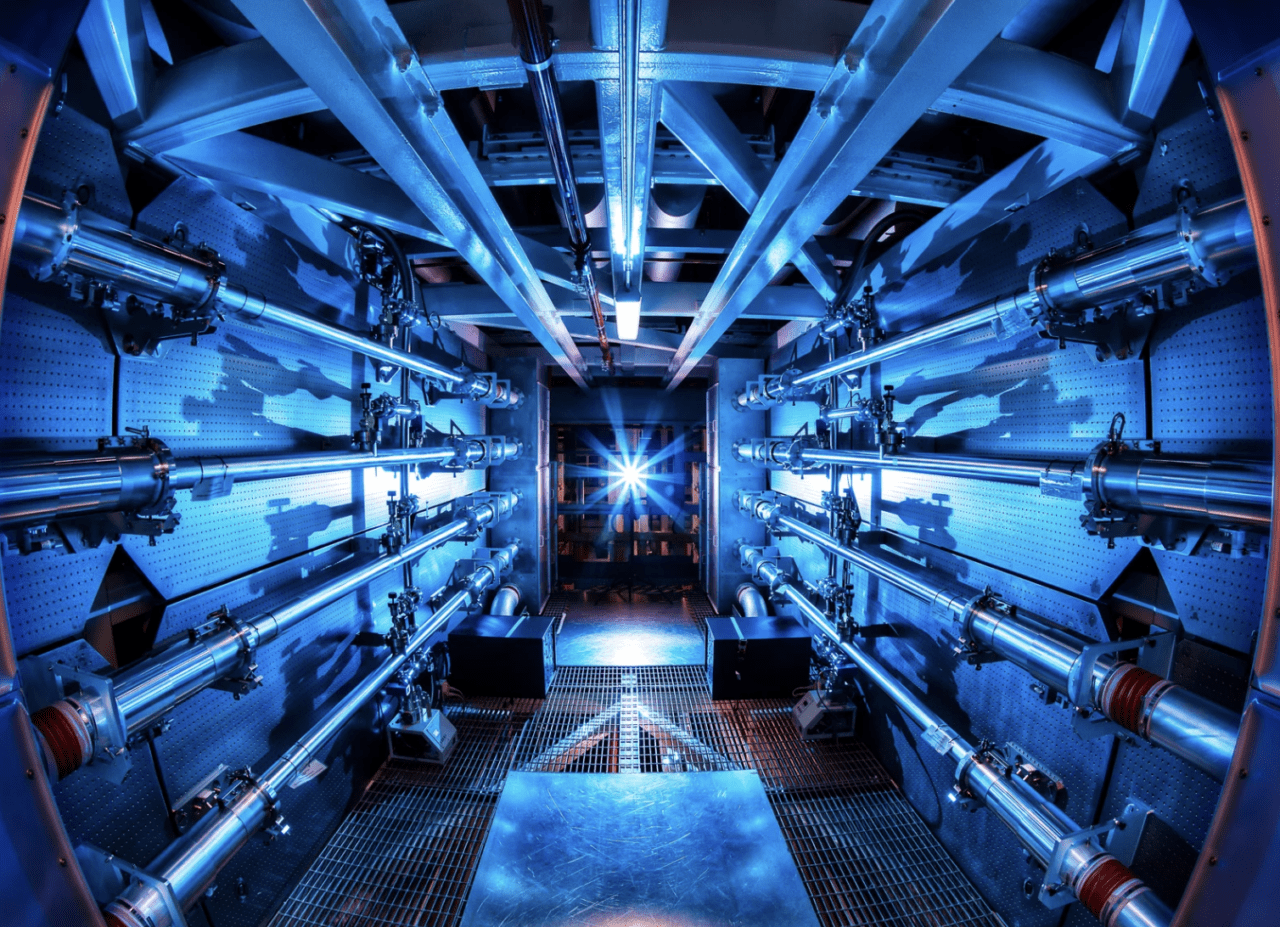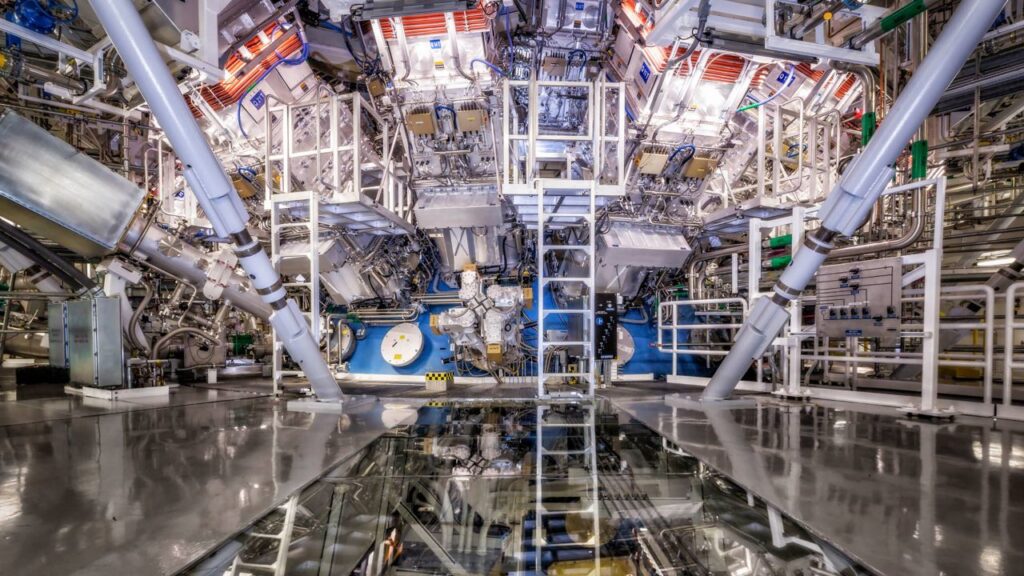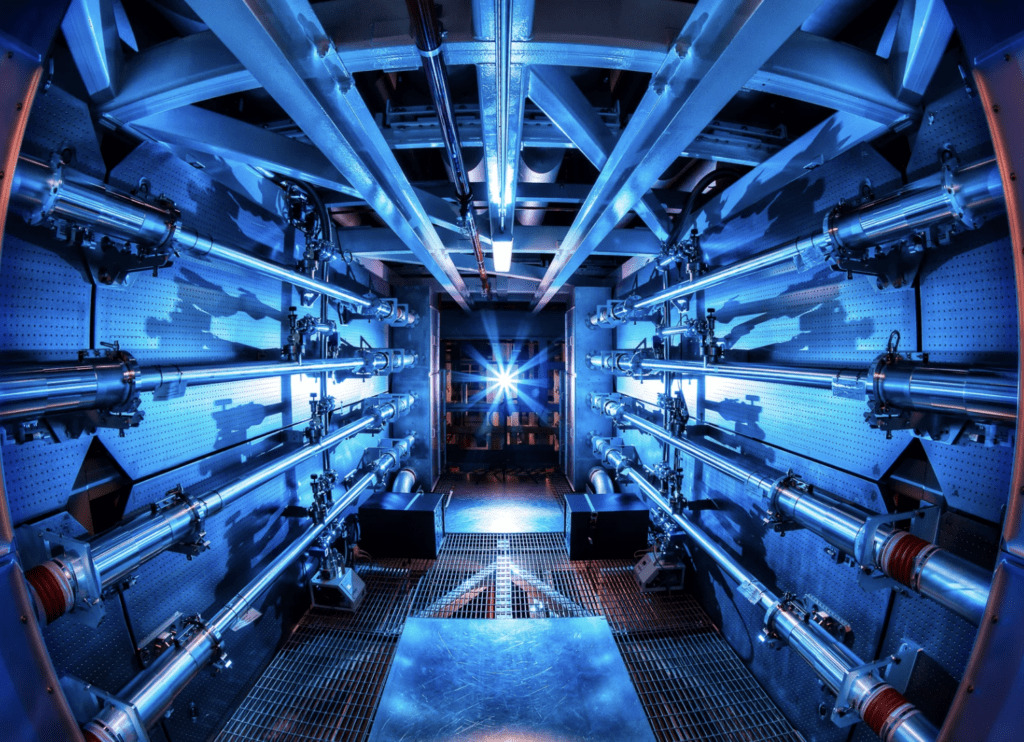DOE Confirms Fusion Energy Milestone at California Lab
Credit to Author: Darrell Proctor| Date: Tue, 13 Dec 2022 15:08:55 +0000

The first nuclear fusion reaction to result in a net energy gain has been successfully completed by scientists at a laboratory in California, a milestone in the decades-long pursuit of a way to produce unlimited energy with no carbon emissions or nuclear waste.
U.S. Energy Secretary Jennifer Granholm made the official announcement Dec. 13 during a news conference at the Dept. of Energy (DOE) in Washington, D.C. Granholm confirmed the news that was first reported Sunday, when news outlets including POWER cited sources that said researchers at the National Ignition Facility (NIF) at the Lawrence Livermore National Laboratory on Dec. 5 had produced a fusion reaction that created more energy than it consumed.
Granholm on Tuesday said the fusion experiment at the NIF replicated “certain conditions that are only found in the stars and sun.” Officials said the results of the Dec. 5 reaction needed to be analyzed and peer reviewed before an official announcement of the breakthrough, which is why it was not immediately publicized.
Said Granholm: “Ignition allows us to replicate for the first time certain conditions that are only found in the stars and sun. This milestone moves us one significant step closer to the possibility of zero carbon abundant fusion energy powering our society. This is what it looks like for America to lead, and we’re just getting started. If we can advance fusion energy, we could use it to produce clean electricity, transportation fuels, power, heavy industry and so much more.”
Nuclear power experts applauded Tuesday’s announcement, while acknowledging that progress in showing conceptual viability for fusion is just another stop on what most if not all think is a long scientific, technical, and financial road to commercializing this long-elusive technology.

Engineering Marvel
“This is very important because from an energy perspective, it can’t be an energy source if you’re not getting out more energy than you’re putting in,” Julio Friedmann, chief scientist at Carbon Direct and a former chief energy technologist at Lawrence Livermore, told CNN. “Prior breakthroughs have been important but it’s not the same thing as generating energy that could one day be used on a larger scale.”
White House Office of Science and Technology Director Dr. Arati Prabhakar said during Tuesday’s news conference: “This is an amazing example of America’s enterprise … I want to congratulate the entire Dept. of Energy under Secretary Granholm’s leadership.” Prabhakar called the fusion net energy reaction “an engineering marvel.”
Said Prabhakar: “It’s a century since we figured out it was fusion that was going on in our sun and all the other stars. And in that century, it took so many different kinds of advances that ultimately came together to the point that we could replicate that fusion activity in a laboratory.”
Jill Hruby, under secretary for Nuclear Security for the DOE, and National Nuclear Security Administration administrator, said that “going forward,” the work on fusion will have further “breakthroughs” and “setbacks.” Hruby said her agency’s work is focused on “promoting national security” while “pushing towards … a clean energy future.” She called Tuesday’s announcement “unprecedented” for the scientific community.
The Process of Fusion
The process of fusion works when nuclei of two atoms are subjected to extreme heat of more than 100 million degrees Celsius—that’s 180 million degrees Fahrenheit. This causes the atoms to fuse into a new larger atom, which gives off massive amounts of energy. It’s the same process that powers the sun and the stars.
The process, though, also consumes enormous amounts of energy. A goal of fusion scientists has been to make the process self-sustaining, and most importantly to get more energy out of the process than it uses—hence, to produce net energy. It’s also a goal for the process to work continuously, instead of just for brief moments.
Want to learn more about fusion technology? Check out this edition of The POWER Podcast, “Could Fusion Energy Transform the Power Industry By 2035?” Also read “Fusion Energy Is Coming, and Maybe Sooner Than You Think,” which touches on fusion basics, and goes into greater detail on other research that’s being done and some of the challenges to commercialization of fusion technology.
Reaching those goals could lead to commercialization of fusion, which industry experts have said could happen within the next decade, though they acknowledge it could take longer. What has many researchers excited is the potential to create essentially an unlimited supply of carbon-free energy, which could help fight climate change—and do it without the nuclear waste produced by today’s fission reactors.
“The fact that we were able to get more energy out than we put in provides an existence proof that this is possible,” said Mark Herrmann, program director for weapons physics and design at the Livermore lab. “It can be built on and improved upon and made better and could potentially be a source of energy in the future.”

Many Steps Needed
Successfully producing net energy, though, is just one of many steps needed to deliver the promise of fusion. The energy produced by fusion would need to be harvested, and then transferred to the power grid as electricity. Many scientists, even after Tuesday’s announcement, still say it will take years (some say decades) before fusion would be able to produce unlimited amounts of clean energy.
Tony Roulstone, a nuclear engineer at Cambridge University in the UK, told NPR (National Public Radio) that unless more significant progress is made, fusion would be unlikely to have a major role in power generation for another 40 to 50 years.
“I think the science is great,” said Roulstone, who has done an economic analysis of fusion power. “We don’t really know what the power plant would look like.”
Irina Tsukerman, a geopolitical analyst and president of Scarab Rising, a New York-based advisory company, told POWER that “fusion research needs better PR [public relations]. It is extremely underrated. So far, most of the energy-related focus has been on climate-related applications, such as carbon emission reduction. There is not a wide commercial awareness of potential fusion applications … so there is no significant private sector incentive to devote resources to that type of research, when the overall social push lies with other types of energy.”
Tsukerman said “stereotypes related to nuclear energy research in general” also have been a limiting factor for investment in fusion research. “If fusion is seen as ‘sexy’, safe, and spreading, it will take off just as anything that is seen as trendy and exciting has done up until now.” She continued: “There is also a great need for non-government actors to fund this space and to diversify the research in general.”
Global Research
There are several fusion projects ongoing in the U.S., as well as the UK and Europe. France is home to the International Thermonuclear Experimental Reactor, or ITER, a program in which 35 countries are collaborating. Those countries include the U.S., China, the European Union, Russia, South Korea, Japan, and India.
Much of the work in the U.S. is happening at the NIF at Lawrence Livermore, in a massive, 10-story-tall building the size of three U.S. football fields. The NIF opened in 2009, but many officials questioned the billions of dollars being poured into the project, which is researching what’s called “thermonuclear inertial fusion.” Scientists fire pellets containing hydrogen fuel (with two isotopes of hydrogen) into an array of 192 lasers, which essentially creates a series of very fast, repeated explosions at a rate of 50 times per second. The energy collected from the resulting neutrons and alpha particles is extracted as heat, as the isotopes of hydrogen fuse together and release massive amounts of energy.
“Unlike coal, you only need a small amount of hydrogen, and it is the most abundant thing found in the universe,” said Friedmann in his comments to CNN. “Hydrogen is found in water so the stuff that generates this energy is wildly unlimited and it is clean.”
In August 2021, physicists at Lawrence Livermore were able to “ignite” the hydrogen inside the capsule, which created a self-sustaining burn. Riccardo Betti, the chief scientist of the laboratory for laser energetics at the University of Rochester in New York, told NPR that the process is analogous to lighting gasoline. “You start with a little spark, and then the spark gets bigger and bigger and bigger, and then the burn propagates through.”
Researchers with the ITER project, and scientists in the UK, are working with tokamaks, large circular machines outfitted with giant magnets, to produce the same result as their U.S. counterparts. The tokamak confines plasma using magnetic fields in a donut shape that scientists call a torus. After fuel is put into a tokamak, its magnets are turned on. The temperatures inside are raised exponentially to create plasma. The plasma must reach at least 150 million degrees Celsius, which is 10 times hotter than the core of the sun. The neutrons then escape the plasma, hitting a so-called “blanket” lining the walls of the tokamak, and transferring their kinetic energy as heat.
—Darrell Proctor is a senior associate editor for POWER (@POWERmagazine).
The post DOE Confirms Fusion Energy Milestone at California Lab appeared first on POWER Magazine.